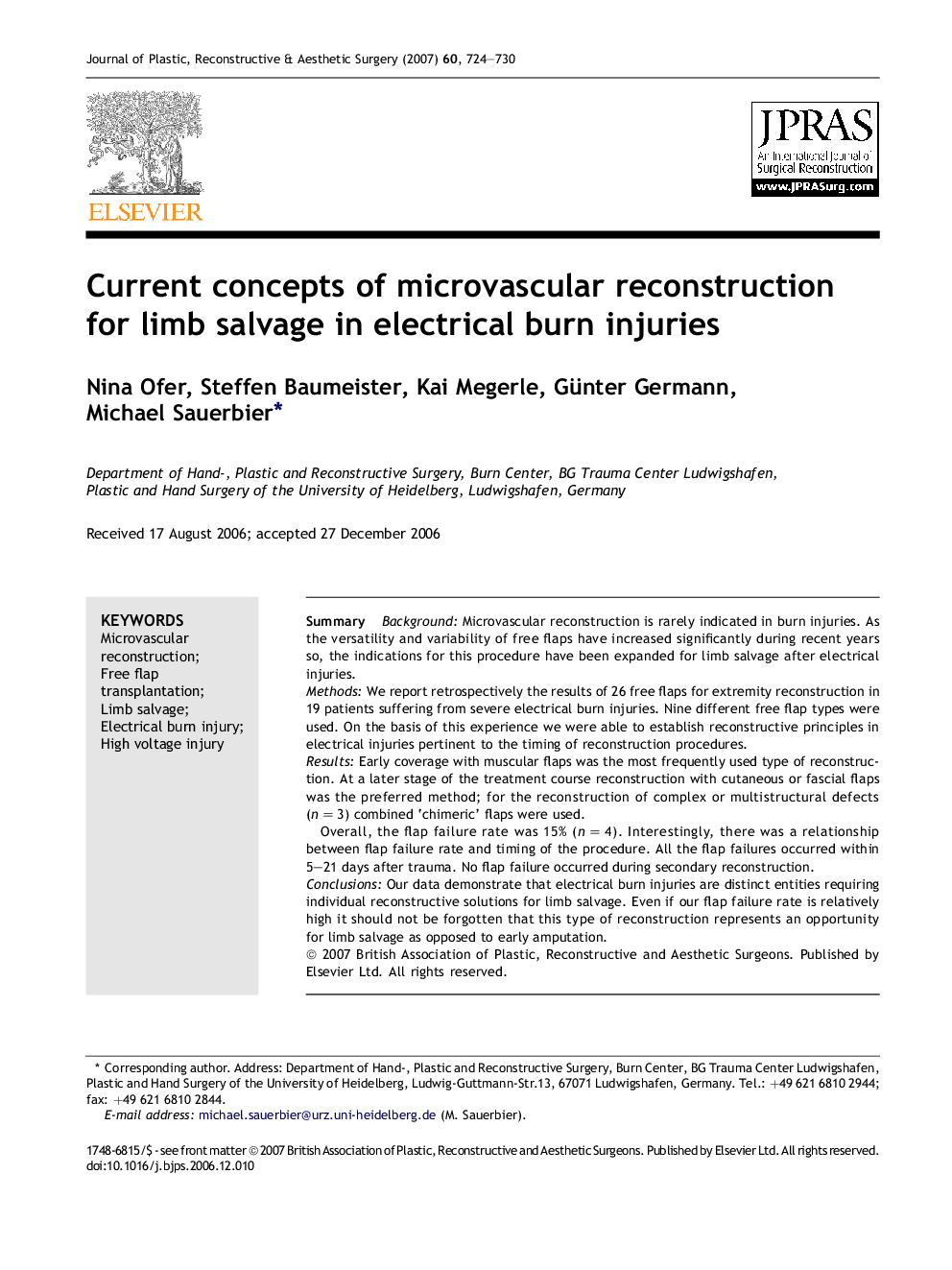| Article ID | Journal | Published Year | Pages | File Type |
|---|---|---|---|---|
| 4121280 | Journal of Plastic, Reconstructive & Aesthetic Surgery | 2007 | 7 Pages |
SummaryBackgroundMicrovascular reconstruction is rarely indicated in burn injuries. As the versatility and variability of free flaps have increased significantly during recent years so, the indications for this procedure have been expanded for limb salvage after electrical injuries.MethodsWe report retrospectively the results of 26 free flaps for extremity reconstruction in 19 patients suffering from severe electrical burn injuries. Nine different free flap types were used. On the basis of this experience we were able to establish reconstructive principles in electrical injuries pertinent to the timing of reconstruction procedures.ResultsEarly coverage with muscular flaps was the most frequently used type of reconstruction. At a later stage of the treatment course reconstruction with cutaneous or fascial flaps was the preferred method; for the reconstruction of complex or multistructural defects (n = 3) combined ‘chimeric’ flaps were used.Overall, the flap failure rate was 15% (n = 4). Interestingly, there was a relationship between flap failure rate and timing of the procedure. All the flap failures occurred within 5–21 days after trauma. No flap failure occurred during secondary reconstruction.ConclusionsOur data demonstrate that electrical burn injuries are distinct entities requiring individual reconstructive solutions for limb salvage. Even if our flap failure rate is relatively high it should not be forgotten that this type of reconstruction represents an opportunity for limb salvage as opposed to early amputation.
